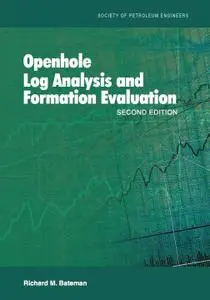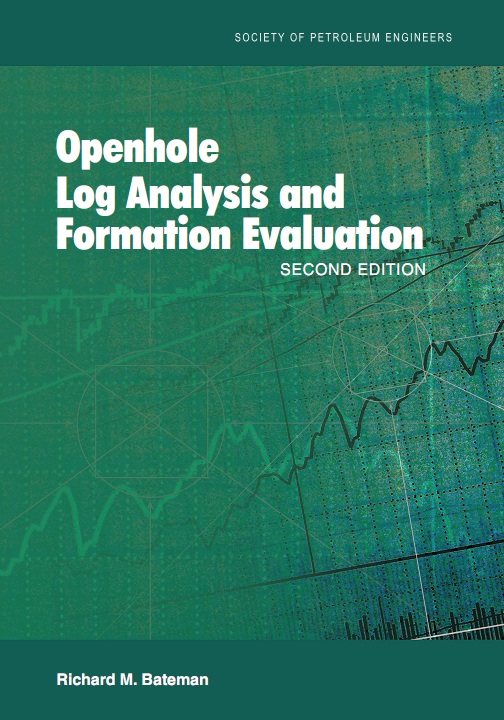Richard M. Bateman, "Openhole Log Analysis and Formation Evaluation, Second Edition"
2012 | ISBN-10: 1613991568 | 668 pages | PDF | 63 MB
2012 | ISBN-10: 1613991568 | 668 pages | PDF | 63 MB
Preface
Formation evaluation is an extremely broad term and can encompass many different disciplines.
Thus, any work that includes the phrase in its title runs a double risk. An attempt to cover all possible methods of data gathering and analysis would appear presumptuous and overly ambitious, and yet the omission of any of the methods would rightly leave the work incomplete. In its broadest sense, formation evaluation can include everything from macroscopic studies of an entire geologic basin down to microscopic studies of individual mineral grains. Central to both extremes are borehole geophysical well logs. In the practical sense, each formation evaluation method leans on its neighbor for support. Seismic interpretation can be refined in the light of logging data, log response can be calibrated by reference to core analysis, flow testing can refine log-based productivity estimates, etc.
It is this interaction between a spectrum of different formation evaluation methods that makes the whole process of evaluating subsurface formations a dynamic and viable science. Thus, although logs and log analysis are central to this work, it should never be thought that logs alone are sufficient to define entirely the properties of a formation.
The student of formation evaluation should therefore be familiar with geology, geophysics, geochemistry, petrophysics, reservoir engineering, drilling technology, computer science, economics, mathematics, and probability theory. Few occupations require such a wide overall familiarity with so many disciplines. Unfortunately, this has led the formation evaluator to be labeled as the jack of all trades and master of none. However, because of an awareness of the interaction between so many disciplines, he or she is in fact a better master of many trades than many of the jacks of individual ones. It is hoped that this work reflects these sentiments by stressing the fruitfulness of combining neighboring sciences to produce a whole that is greater than the sum of its parts.
This book is divided into sections that address a number of formation evaluation themes. Part I, Methods of Gathering Formation Evaluation Data, includes Chapters 1 through 5. These chapters address methods of gathering data needed to evaluate a formation. Chapters 6 through 8 comprise Part II, Methods of Analysis and Application of Results, and discuss analysis methods in general and the end use of the results of analysis. Part III, Openhole Logging Measurements (Chapters
9 through 20), addresses openhole logging measurements; each tool’s principle of operation and contribution to the overall evaluation problem is covered. Part IV, Analysis of Logs and Cores, includes Chapters 21 through 30. These chapters address more subtle details of log analysis and its integration with core analysis. In Part V, Formation Testing, Chapters 31 and 32 cover formation testing. Part VI, Integrated Formation-Evaluation Plan, consists of Chapter 33. This final
chapter gives an overall “game plan” for the formation evaluator. An appendix to the volume summarizes important log analysis equations.



